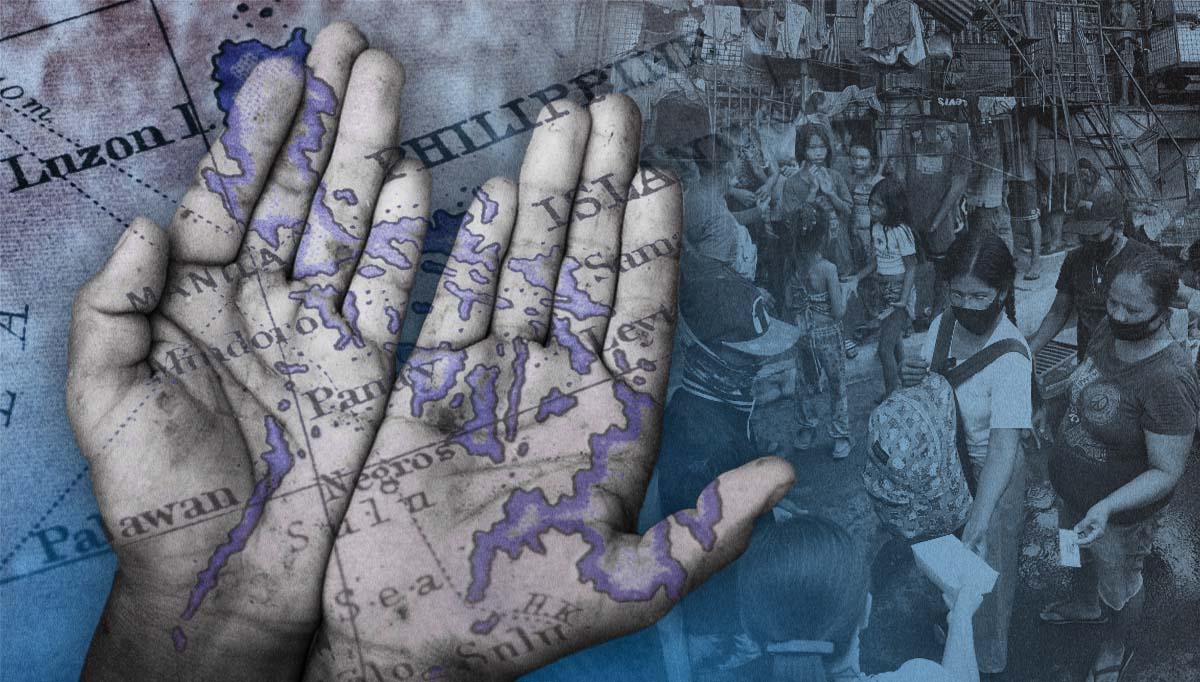P64 food budget per day ‘insufficient’, PSA says

POVERTY composite image from file photos
The country’s statistics agency admitted that the food poverty threshold of P63.87 per person a day is ‘insufficient’, stating that it will review the methodology for calculating poverty and food thresholds next year.
“It’s really insufficient but [the way] we set up the food threshold and the poverty threshold is the minimum basic needs, so it’s the least cost,” National Statistician Claire Dennis Mapa said during a briefing.
According to the Philippine Statistic Authority (PSA), the food threshold for a family of five last year was P9,581, up by 14.7 percent from the P8,353 per month in 2021.

READ: Gov’t poverty metrics: You’re not poor if you spend P21 per meal
This means that a person is not considered as “food poor” or a person who is unable to consume adequate food if he can spend more than P63.87 a day or measly P21.3 every meal.
At the national level, this could mean that a breakfast typically includes a scrambled egg, coffee with milk, and rice or a rice-corn mix. Lunch consists of a cup of monggo with malunggay and dried dilis, a banana, and a serving of rice. For dinner, the meal usually features fried fish or boiled pork, a vegetable dish, and boiled rice while the snack could be a pandesal.
“First, let’s have a menu, what is typical that can produce energy, protein, calcium… those who prepare it are nutritionists, so they have a requirement on energy and nutrients after creating a food bundle for lunch, dinner, which can provide this requirement,” Mapa said.
In calculating the cost, the PSA chooses the cheapest cost of a specific item and it varies from different regions and provinces.
“I agree this is really basic. A lot of people will not be happy about it but that is how the bundle is arrived at. In other words, there is science to it,” he added.
READ: PH poverty rate falls to 15.5% in 2023 – PSA
Moreover, the PSA noted that it will revisit its methodology on computing the food and poverty thresholds.
“We now have several menus to choose from. The technical staff together with our scientists, nutritionists from the Food Nutrition Research Institute are preparing like seven,” Mapa said.
Mapa said that the scheduled adjustment was initially planned for 2021, but due to the peak of the pandemic, it was postponed. They are now waiting for conditions to normalize and plan to implement the adjustment next year.
‘Not enough’
Vicky Velasco, 63, who supports a family of five, said that she spends nearly P1,000 a day on food, which far exceeds her daily earnings as a private employee.
“My expenses are almost 1,000 per day and my salary is not enough for us. I also have to allocate a budget for my medicines, in general it is not enough and I am still in debt,” she said.
A family with five members needed at least P13,873 per month to meet their minimum basic food and nonfood needs last year, improving from P11,998 monthly in 2021.
Earlier, various organizations and officials slammed the National Economic and Development Authority (Neda) following Neda Secretary Arsenio Balisacan’s statement of the said food threshold.
Balisacan admitted that the figure is outdated, having been established over a decade ago.
However, he clarified that Neda did not determine the contents of the basket. Balisacan explained that the computation was based on food items recommended by the Department of Health and the Food and Nutrition Research Institute.
In a separate PSA report, the average income of a family last year was estimated at P353,000,up by 15 percent from the P307,000 seen in 2021.
Meanwhile, Filipino families spent P258,000 last year, much higher compared to the P228,000 three years ago.
Among the regions, Metro Manila had the largest annual family income at P513,000, followed by Calabarzon with P426,000 and Central Luzon at P375,000.
Last month, the PSA said the country’s poverty rate declined to 15.5 percent in 2023 from 18.1 percent in 2021 as the average income of a Filipino increased.
Michael Ricafort, chief economist at Rizal Commercial Banking Corp., said that there is a need to ensure that poverty measures, like the poverty threshold, reflect the actual living costs faced by the average Filipino, including the most affordable food prices available nationwide.
“The achievement of the poverty rate target is a function of the more realistic and practical poverty threshold,” he said.
